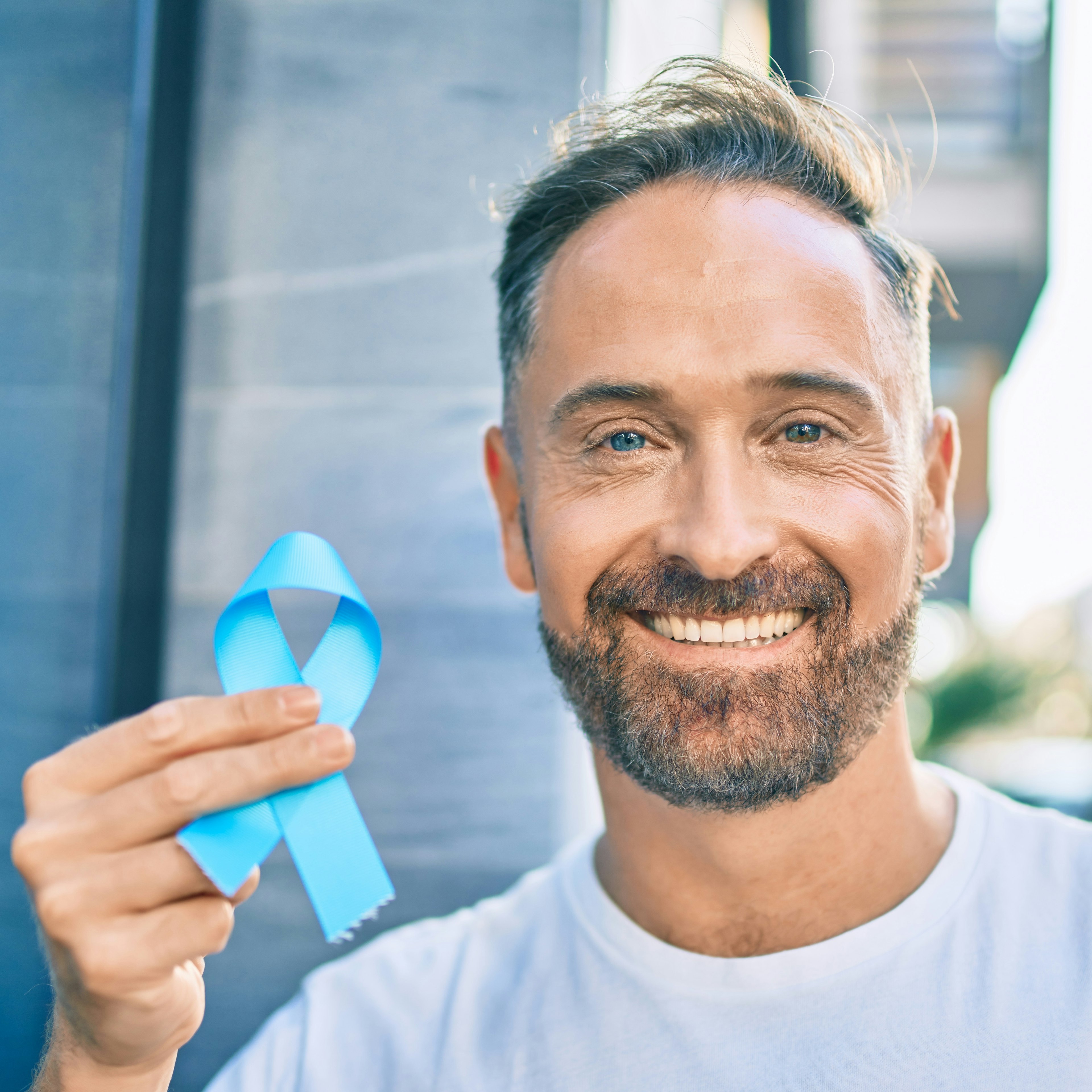Key Takeaways
Prostate and testicular cancers are different but both serious—affecting men at different ages with distinct symptoms.
Early detection is lifesaving, with survival rates over 95% when caught early.
Know the signs: urinary issues or pelvic pain may signal prostate cancer; a lump or swelling may indicate testicular cancer.
Screen regularly: annual prostate exams after 50 (or 45 if high-risk) and monthly testicular self-checks.
Healthy habits matter: balanced diet, exercise, and prompt medical care help reduce risk.
Prostate and testicular cancers both affect the male reproductive system, but they are distinct conditions with different risk factors, symptoms, and treatment approaches. Understanding these differences and recognizing early signs helps men take action sooner and improve long-term outcomes.
Why Early Detection Matters for Men’s Health
- 1 in 8 men will be diagnosed with prostate cancer in their lifetime.
- Testicular cancer most often affects men ages 15 to 40.
- When caught early, both cancers have survival rates above 95%.
Early detection saves lives, yet many men delay or skip screenings. Knowing what to look for—and when to get evaluated—is the first step in protecting your health.
What Is Prostate Cancer?
Prostate cancer develops in the prostate gland, a small organ located below the bladder that produces part of the seminal fluid. It typically grows slowly and affects men over age 50, though some forms can be more aggressive.
Common Risk Factors
- Age over 50
- Family history of prostate or breast cancer
- High-fat diet or obesity
- Hormonal imbalance or elevated testosterone levels
Early Signs and Symptoms
- Difficulty starting or maintaining urination
- Weak urine stream or frequent nighttime urination
- Blood in urine or semen
- Pelvic, hip, or lower back pain
- Erectile dysfunction or pain with ejaculation
Screening and Diagnosis
Men over 50 should schedule yearly screenings, or start at 45 if high-risk. These may include:
- Digital Rectal Exam (DRE): Assesses the size and texture of the prostate.
- PSA Blood Test: Measures prostate-specific antigen levels linked to cancer activity.
- Imaging or biopsy: Confirms diagnosis when results are abnormal.
Treatment Options
Treatment depends on the stage and aggressiveness of the cancer:
- Active surveillance for slow-growing tumors.
- Surgery or radiation therapy to remove or destroy cancer cells.
- Hormone or targeted therapy for advanced or metastatic cases.
With early diagnosis and treatment, prostate cancer has a five-year survival rate of about 97.5%. Schedule your prostate cancer screening in Houston with a CLS Health urologist today to protect your health and peace of mind.
What Is Testicular Cancer?
Testicular cancer begins in one or both testicles, the organs that produce sperm and male hormones. It most often affects men between 15 and 40 and is one of the most treatable cancers.
Risk Factors
- Undescended testicle (cryptorchidism)
- Family history of testicular cancer
- Previous cancer in the other testicle
Early Signs and Symptoms
- A painless lump or swelling in one testicle
- Dull ache or heaviness in the scrotum
- Sudden change in size or firmness
- Pain or discomfort in the groin or abdomen
How to Check for Testicular Cancer
Perform a monthly self-exam after a warm shower:
- Gently roll each testicle between your fingers.
- Check for any lumps, firmness, or size changes.
- If you notice anything unusual, schedule an exam.
Treatment Options
Treatment depends on the stage and type of cancer:
- Surgery (orchiectomy): Removes the affected testicle or tumor.
- Chemotherapy or radiation: Used for advanced or recurrent cases.
- Fertility preservation: Because treatment can affect fertility, sperm banking is often recommended before therapy begins.
With early detection, testicular cancer has a 94.9% five-year survival rate — so don’t wait. See a testicular cancer specialist in Houston today and take charge of your health.
Comparing Testicular and Prostate Cancer

Causes and Prevention
Prostate Cancer Prevention
- Eat a balanced diet rich in fruits, vegetables, and omega-3s
- Maintain a healthy weight
- Exercise regularly
- Schedule PSA screenings starting at age 45, or earlier if high-risk
Testicular Cancer Prevention
- Perform monthly self-exams
- Report any lumps or swelling promptly
- Avoid smoking and maintain hormonal balance through healthy habits
When to See a Doctor
Seek medical attention right away if you experience:
- A lump or swelling in the testicles
- Trouble urinating or blood in urine/semen
- Persistent pelvic, groin, or lower back pain
- Fatigue, sudden weight loss, or unexplained discomfort
- You’re over 45 and due for a prostate screening
Even mild or temporary symptoms can be early warning signs. Early evaluation can make all the difference.
CLS Health Men’s Health Services
At CLS Health, we offer:
- Comprehensive prostate and testicular cancer screenings
- Advanced imaging and lab testing
- Coordinated care among urology, oncology, and primary care specialists
With multiple locations across Houston, CLS Health provides personalized and compassionate care for every stage of your health journey.
Take Charge of Your Health — Get Screened in Houston, TX
Early detection gives you the best chance for successful treatment and peace of mind. Whether you’ve noticed changes in urination or swelling in your testicles, our urology specialists in Houston are here to help.
Schedule your prostate or testicular cancer screening today at one of our Houston-area CLS Health clinics — and take the first step toward protecting your future.
FAQs
Nearly 97.5% of men who receive early treatment survive at least five years after diagnosis.
Perform a monthly self-exam after a warm shower. If you feel pain, swelling, or a lump, schedule an appointment immediately.
While rare, it’s still important to screen for both since they affect different organs and age groups.




